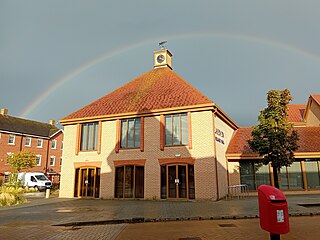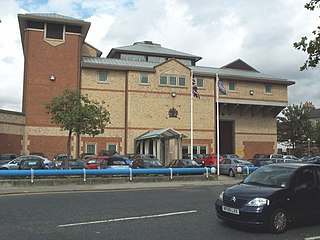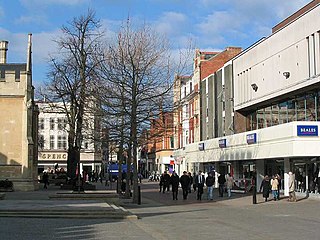
Luton is a town and borough in Bedfordshire, England. The borough had a population of 225,262 at the 2021 census.

Bedfordshire is a ceremonial county in the East of England. It is bordered by Northamptonshire to the north, Cambridgeshire to the north-east, Hertfordshire to the south and the south-east, and Buckinghamshire to the west. The largest settlement is Luton (225,262), and Bedford is the county town.

Bedford is a market town in Bedfordshire, England. At the 2011 Census, the population of its urban area, including Kempston and Biddenham, was 106,940. Bedford is also the county town of Bedfordshire and seat of the Borough of Bedford, a unitary authority that includes a significant rural area.

Kempston is a town and civil parish in the Borough of Bedford, Bedfordshire, England, situated around 2 miles (3.2 km) south-west of Bedford town centre. It had a population of 19,330 in the 2011 census, and forms part of the wider Bedford built-up area. The River Great Ouse separates it from the Queen's Park area of Bedford.

Bedford, or the Borough of Bedford, is a unitary authority area with borough status in the ceremonial county of Bedfordshire, England. The council is based in Bedford, the borough's namesake and principal settlement, which is the county town of Bedfordshire.

Bedford Borough Council is the local authority of the Borough of Bedford, a local government district in the ceremonial county of Bedfordshire, England. The town of Bedford was a borough from at least the 12th century until 1974, when the modern district was created. It covers a largely rural surrounding area as well as the town itself. The modern council was initially called Bedford District Council from 1974 to 1975, then North Bedfordshire Borough Council from 1975 until 1992, when the current name was adopted. Until 2009 it was a lower-tier district council, with county-level services provided by Bedfordshire County Council. The county council was abolished in 2009, since when Bedford Borough Council has been a unitary authority, being a district council which also performs the functions of a county council.

Bedfordshire County Council was the county council of Bedfordshire in England. It was created in 1889 and abolished in 2009. Throughout its existence, the council was based in Bedford.

Harlington is a village and civil parish located in Bedfordshire, England, near the M1 motorway. The nearest town is Flitwick about 3 miles (4.8 km) to the north.

Brickhill is a civil parish and electoral ward within northern Bedford in Bedfordshire, England.
Dame Alice Harpur School, known from 1882 until 1946 as Bedford Girls' Modern School, was a private girls school in Bedford, England, for girls aged 7–18. In September 2010 the junior department of the school merged with the junior department of Bedford High School. From September 2011 to September 2012 the senior schools also merged; the new school is known as Bedford Girls' School.

Elstow is a village and civil parish in the Borough of Bedford, Bedfordshire, England, about 2 miles (3.2 km) south of Bedford town centre.

Wixams is a new town and civil parish located in Bedfordshire, England, which has been under construction since early 2007. It is expected to become the third largest settlement in the Borough of Bedford after Bedford itself and Kempston, and one of the largest new settlements founded in England since the British new towns movement of the first twenty five years after World War II.

De Parys is an electoral ward and area within the town of Bedford, Bedfordshire, England.

Harpur is an electoral ward and area within the town of Bedford, England.

Castle is an electoral ward and area of Bedford, Bedfordshire, England.

Bedford College is a further education college located in Bedford, Bedfordshire, England. It is the principal further education provider in the Borough of Bedford.
Bedford Academy is a mixed secondary school and sixth form located in the Kingsbrook area of Bedford, Bedfordshire, England.

The Higgins Art Gallery & Museum is the principal art gallery and museum in Bedford, Bedfordshire, England, run by Bedford Borough Council and the trustees of the Cecil Higgins Collection.

The Shire Hall is a municipal building in St Paul's Square, Bedford, Bedfordshire. The shire hall, which was the headquarters of Bedfordshire County Council from 1888 to 1969, is a Grade II* listed building.
The town of Dunstable in Bedfordshire, England was governed as an ancient borough between the twelfth century and the sixteenth century. The town’s borough status was effectively lost after 1541, following the English Reformation. Urban local government returned to the town in 1863 with the establishment of a local board. The following year borough status was restored to the town when it was made a municipal borough.




















